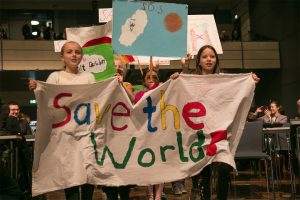The UN Environment Programme (UNEP) has published its annual Adaptation Gap Report, which finds that amid growing climate change impacts, progress on adaptation is slowing. This, it warns, “has massive implications for losses and damages, particularly for the most vulnerable.”
This year’s report, produced in partnership with UNEP’s Copenhagen Climate Centre and World Adaptation Science Programme (WASP), is titled, ‘Underfinanced. Underprepared. Inadequate Investment and Planning on Climate Adaptation Leaves World Exposed.’ It assesses adaptation across the areas of finance, planning, and implementation, concluding that slow and insufficient action “is increasingly translating into limits to adaptation, some of which may have already been reached.”
“Lives and livelihoods are being lost and destroyed, with the vulnerable suffering the most,” said UN Secretary-General António Guterres in his message on the report. “Action to protect people and nature is more pressing than ever.”
The report estimates the updated costs of adaptation for developing countries to be in a plausible central range of USD 215 billion to USD 387 billion per year this decade. The modelled costs of adaptation, assessed at USD 215 billion per year this decade, are projected to rise significantly by 2050. The USD 387 billion per year estimate is based on extrapolation of costed nationally determined contributions (NDCs) and National Adaptation Plans (NAPs) and extends until 2030. These needs are ten to 18 times greater than international public finance flows, the report finds, and over 50% higher than the previous estimated range.
According to a recent study, the 55 most climate-vulnerable countries have already suffered losses and damages of more than USD 500 billion over the course of the last two decades. In the absence of bold mitigation and adaptation, these costs will rise significantly, the report argues, “but more robust numbers are needed that underpin the urgency of addressing losses and damages.” It underscores that the loss and damage fund agreed at the UN Climate Change Conference (UNFCCC COP 27) in 2022, “will need to move towards more innovative financing mechanisms to reach the necessary scale of investment.”
The report recommends increasing financing through:
- international public adaptation finance;
- domestic expenditure on adaptation;
- private sector finance for adaptation;
- remittances by migrants to their home countries;
- increasing finance tailored to small and medium-sized enterprises (SMEs);
- reform of the global financial architecture; and
- making finance flows consistent with a pathway towards low-carbon and climate-resilient development.
The report argues that progress on the loss and damage fund and in the discussions on the establishment of a new collective quantified goal on climate finance “can inform the Global Goal on Adaptation and provide a more robust framework for adaptation finance needs.”
Speaking at the report’s launch, UNEP Executive Director Inger Andersen “urge[d] policymakers to take heed of the Adaptation Gap Report, step up finance, and make COP 28 the moment that the world committed fully to insulating low-income countries and disadvantaged groups from damaging climate impacts.”
The 2023 publication of the Adaptation Gap Report was supported by European partners, including the EU, the UK, and Denmark. Released on 2 November, ahead of the UN Climate Change Conference in Dubai, United Arab Emirates (UAE), the report is one of three ‘gap reports’ produced by UNEP and partners. The other two address the mitigation and production gaps. [Publication: Adaptation Gap Report 2023: Underfinanced. Underprepared. Inadequate Investment and Planning on Climate Adaptation Leaves World Exposed] [Executive Summary] [Key Messages] [Publication Landing Page] [UNEP Press Release] [UN News Story] [SDG Knowledge Hub Story on Adaptation Gap Report 2022] [SDG Knowledge Hub Story on Adaptation Gap Report 2021]

